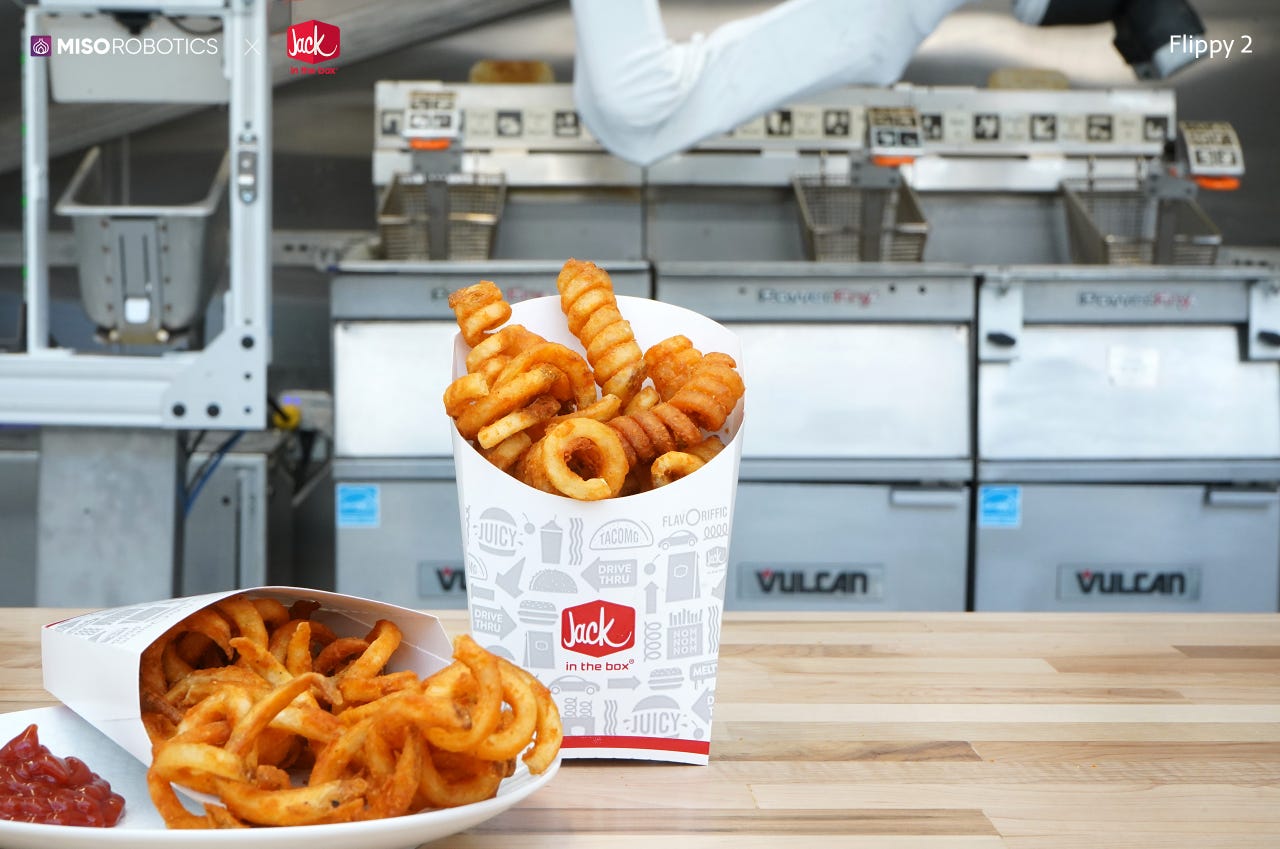Amazon teams up with a fast food robot


The maker of a fast food robot designed to cook burgers, fries, wings, and chips for major chains is partnering with Amazon Web Services. The move will allow Miso Robotics to drastically increase its simulation capacity, a key ingredient in the fast-food robot wars.
ZDNET Recommends
This is a story about the intersection of automation and customization, previously considered incompatible. Miso Robotics makes fast food fry cook robots named Flippy 2 and Flippy Lite. But to compete in the hyper-competitive quick-serve space where major brands have signature styles and offerings, the company needs to ensure its robots can adapt to very specific cooking and preparation outputs. Miso has already teamed up with big chains like White Castle and Chipotle, but the prototyping process is very time-consuming.
Enter AWS, and specifically AWS RoboMaker, a cloud-based simulation service that enables robotics developers to run, scale, and automate simulation. The move to AWS RoboMaker drastically increases simulation capacity, allowing Miso to run up to fifty simulations at once. That, in turn, will enable the company to put out functional products, including brand-specific offerings, at a much quicker rate.
"Integrating into AWS RoboMaker has been a game-changer for us to scale our products and make sure the software and its updates are ready to deploy with units in the field," said Chris Kruger, CTO of Miso Robotics. "We went from running 12 simulations a month with single units to doing 100 in a night. By testing hundreds of configurations in parallel, we are able to save costs and develop products faster."
Also: Wing Zone goes all-in on robot fry cook
This matters because the long uphill climb to restaurant automation seems, at last, to be cresting. Integrations like AWS RoboMaker to Miso's development process are just the latest in a long line of technology convergence, helping automation fall in price, increase in complexity, and become compatible with customization. That process, which started with mobile computing and a drastic decline in sensor prices, continued with AI and machine vision advances, and is enabled by cloud architecture, is reaching maturity exactly as a tight labor market and rising wages are making a case for automation difficult to ignore.
In other words, we're about to see a WHOLE LOT of robots in spaces typically occupied by low wage workers. Fast food is a textbook example. The robots from Miso Robotics, which has a lead in the space, and the addition of brands like Jack in the Box to its growing list of pilot customers, marks a very important milestone in next-generation automation.
Will robots replace most of our jobs anytime soon? No, they won't. But the fast-food sector (to say nothing of grocery, retail, logistics, and some construction jobs) is being fundamentally transformed, and whatever hype we've heard about these technologies in the past, the tipping point finally seems to be here.